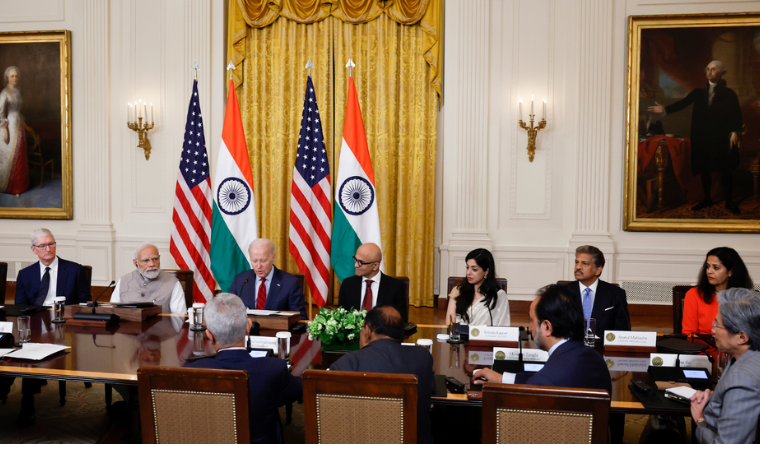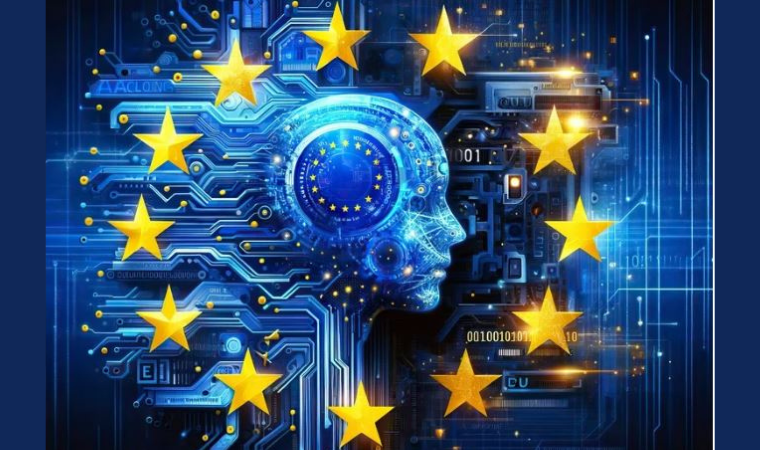Artificial Intelligence (AI) is transforming the way the world operates. AI can be found in chatbots and digital assistants, medical imaging and self-driving cars. With such a fast increase however, nations are posing the same question: how do we make it safe and fair?
The draft of AI regulation has begun to provide the answer to this question in India. The European Union (EU) has enacted the world’s first full AI law, setting a strict regulatory standard. In contrast, the United States (U.S.) pursues a more lenient approach, allowing flexibility and innovation. Meanwhile, India takes a middle path, balancing regulation with the need to support emerging AI technologies.It desires to promote innovation but with ethical usage of technology.
We can examine India’s AI strategy in comparison with the EU and U.S. approaches and explore what it means for the future of artificial intelligence.
The Indian Strategy: Slow and Practical
The government of India is not falling into a single large AI law. Rather, it is taking things one step at a time. The Ministry of Electronics and Information Technology (MEITY) has published reports, sought the opinion of the people and established committees to develop principles of responsible AI usage.
The country centers its strategy on core values such as safety, fairness, accountability, and inclusiveness. India does not want to implement strict rules but instead develops versatile policies that can suit the needs of specific industries.
This would be reasonable in a nation that is diverse. India uses Artificial Intelligence in many ways: predicting rainfall to assist farmers, improving healthcare diagnostics, and automating small businesses. One rigid rule that everybody will not do.
By making things adaptive, India is likely to assist innovation, as well as safeguard users simultaneously. The government desires AI to be used to the benefit of the populace and not only large businesses.

The EU paradigm: Rules First, Risks Defined
Artificial intelligence law The Artificial Intelligence Act of the European Union was signed in 2024 and is the first major AI law to be enacted in the world. It is a risk-based system that classifies AI tools into four categories:
- Unacceptable risk: AI posing a danger to safety or human rights, such as social scoring or manipulative surveillance, is prohibited.
- High risk: AI in sensitive fields like labor and staffing, biometric ID, or in education undergoes hard tests and certifications before implementation.
- Minimal risk: AI has to correspond to certain transparency standards, i.e., it must inform users that it communicates with a machine.
- Low risk: AI that has a low or no effect can make free work.
The EU strategy focuses on protecting individuals. Companies must document their systems, ensure human oversight, and maintain accuracy. These guidelines reassure citizens that AI will be used responsibly and not misused.
Nevertheless, there is a drawback to the system. Startups that do not have resources to comply with all steps can make it expensive and complicated. Others fear that this could slack on the pace of innovation, particularly to small technology companies that attempt to compete with the big players.
The U.S. Model: Open but Uneven
The United States has embarked on a decentralized and loose course. No federal law on AI exists. Rather, regulation is done by various government agencies and states on a case by case basis.
For example:
- The National Institute of Standards and Technology (NIST) has AI safety and risk management frameworks.
- Consumer protection and privacy with regards to AI are managed by the Federal Trade Commission (FTC).
- Other states, such as California or New York, have also developed their privacy or AI-specific legislation.
Freedom to innovate is provided by this system in companies. Startups do not have to wait until approvals take time before they can test and deploy AI. But inconsistency is also created. An organization with many states of operation can encounter conflicting regulations and this raises legal uncertainty.
The approach is best used when the U.S. aims at rapid growth but might not cope with new ethical and social issues on a large scale.

India vs. EU vs. U.S.: A Closer Comparison
Having learned about all the models, now we are going to compare their differences in all major areas.
1. Legal Uncertainty and Elasticity
- The EU is an excellent source of legal assurance-firms understand what is permissible.
- The U.S is flexible but inconsistent.
- India sits in the middle. Its draft guidelines are flexible and principle-based enough to allow innovation and control.
2. Risk Management
- In the EU, there is a well-defined risk framework that is highly enforced.
- India is also in favor of a risk based model but intends to vary requirements by sector.
- The U.S. is dependent on the current laws which can mitigate the risk in an indirect and uneven way.
3. Impact on Startups
- India is eager to assist startups in expanding without imposing compliance regulations on them.
- The EU is safer and more trustworthy but with increased compliance costs.
- The U.S. permits rapid experimentation, but small companies may not be able to adapt to the evolving policies on a state level.
4. Privacy and Data Protection
- The EU associates AI regulation with the GDPR, its popular privacy law.
- The U.S. is a combination of federal and state laws.
- A recent law in India, the Digital Personal Data Protection Act, establishes the privacy standard under which future AI regulations will probably be established.
The dilemma India will face will be to make sure that AI regulation does not oppose its data protection law.
5. Accountability and Transparency
Each of the three models emphasizes the role of transparency.
- The EU requires it on some AI applications.
- The U.S. implements it in the form of consumer protection laws.
- India promotes proportionate transparency, meaning smaller AI tools do not need the same level of scrutiny as large systems like facial recognition.
This dynamic model can assist India to stay fair and make innovation affordable.
6. Global Positioning
- The EU desires to become an internationally prescriptive AI, as it was with privacy in GDPR.
- The U.S. is the most innovative and influential in the market setting, and the world standards are determined by the technological giants of the country.
- India is taking a mid course- a model that is both responsible and opportunity-oriented.
To developing countries, the Indian case may provide a feasible example- one that does not ignore safety but also does not ignore growth.
What Businesses Can Do Now
In case you are creating or utilizing AI systems in any of these areas, then you can begin planning the future with a couple of sensible things:
- Identify risks early. Classify your AI tools depending on their ability to influence people or businesses.
- Keep your information hygienic and moral. Adhere to regulations on privacy and be able to get consent to use data.
- Document your process. Keep a basic record of how your AI functions, what data it is fed, and how you test it.
- Stay updated. The laws are evolving rapidly- at least in India. Monitor new instructions or warnings.
- Design for flexibility. Construct structures in a way that they are easily adjustable in case new laws require more transparency or safety inspections.
Responsible AI will save businesses money and time in the future by being developed now before new laws come into effect.
The Strategic Middle Path of India
The slow and deliberate pace of India can be prudent. It is through this non-radical regulation, which will enable the country to safeguard innovation without excessive control of risks.
Nonetheless, India would still have to clarify some specifics, such as who is responsible to regulate the misuse of AI, how the sanctions will be implemented, and what are norms in each industry. India could bridge the gap between innovation and regulation by creating AI sandboxes, where firms test their systems safely under government supervision.
Teamwork will also be essential. Businesses, policymakers as well as researchers need to keep collaborating so that the rules can be fair, practical and future-ready.

The Global Turning Point
Today, the world is entering a critical period of AI governance. While the EU has chosen strict, protective laws, the U.S. favors flexible, market-oriented regulation. Meanwhile, India is forging a third path—a balanced approach that combines flexibility with ethical responsibility.
Both models are indicative of the values of their societies:
- The EU is concerned with safety and rights.
- The U.S. attaches importance to freedom and innovation.
- India is a country of moderation, which seeks responsible development.
Consequently, India’s approach could influence AI regulation across the Global South, as other developing nations observe its example. Moreover, it demonstrates that innovation and regulation do not have to be mutually exclusive.
Conclusion
AI is influencing the economy, employment and even social behavior. Technology without trust can never be enduring. This is the reason why nations are in a hurry to construct guardrails.
While the EU’s AI Act is authoritative and the U.S. approach is market-driven, India is pursuing a thoughtful middle path. By staying adaptable, India can protect users, attract entrepreneurs, and serve as a global example of responsible AI regulation.”
Ultimately, it is not the aim to put AI on hold, but to ensure that it is safe, equitable and beneficial to all.









